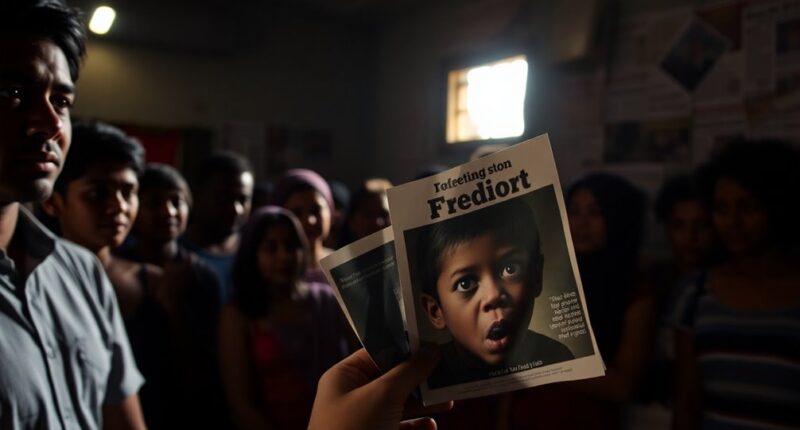*Sound of Freedom* has stirred controversy for misrepresenting trafficking victims and oversimplifying rescue operations. It inaccurately depicts most victims as children, ignoring the large number of adult women affected. The film sensationalizes rescue efforts, raising ethical concerns about the methods used by Operation Underground Railroad. Additionally, it promotes a moral crusade influenced by religious beliefs, glossing over systemic issues like poverty. Discovering the truth behind these claims will shed light on this complex issue.
Key Takeaways
- The film misrepresents trafficking victims as primarily children, ignoring the significant number of adult victims, especially women, who are trafficked for labor.
- Operation Underground Railroad’s rescue numbers are exaggerated, claiming only 54 were saved instead of the actual 127 individuals rescued.
- Tim Ballard is inaccurately portrayed as a lone hero, while he worked as part of a team in Homeland Security during rescue operations.
- The film dramatizes rescue missions with fictional elements, including exaggerated character backstories and sensationalized scenarios that distort real trafficking issues.
- Critics raise ethical concerns about the tactics used by O.U.R., questioning the prioritization of sensationalism over the welfare of victims during rescue operations.
The Misrepresentation of Trafficking Victims

While “Sound of Freedom” aims to shed light on the vital issue of human trafficking, it misrepresents the reality faced by victims.
In real life, many trafficking victims aren’t just children; around half are adult women, and most young victims are teenagers, often known to their traffickers.
The film paints an inaccurate picture that all victims are abducted, disregarding the fact that many are lured by family members or acquaintances.
Additionally, it focuses primarily on sexual exploitation, ignoring that many victims are trafficked for labor.
The film’s emphasis on sexual exploitation overlooks the significant issue of labor trafficking affecting countless victims.
The movie also fails to address systemic issues like poverty and lack of education, which are essential to understanding trafficking.
This narrow portrayal creates a skewed perspective on the complex realities of those affected. Furthermore, emotional support is crucial for helping victims cope with the trauma they experience.
Dramatic Fiction vs. Reality: The Rescue Operations
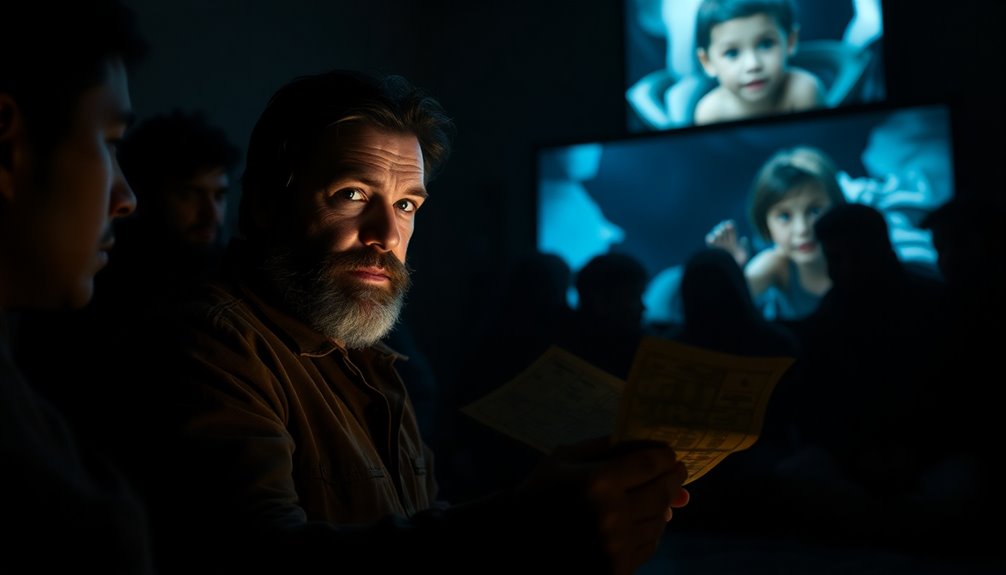
Although “Sound of Freedom” captures the urgency of rescue operations, it dramatizes and simplifies the realities faced by those involved.
In the true story of Tim Ballard’s missions, several key aspects differ considerably from the film’s portrayal:
- Operation Triple Take rescued 127 individuals, not just the 54 depicted.
- The Amazon operation lacked military or police support, complicating the mission.
- Many trafficking victims are adult women, not just children, and the focus on sexual exploitation oversimplifies the issue.
Additionally, the emotional toll of online cheating can often be underestimated, similar to the complexities faced during rescue missions.
The Role of Operation Underground Railroad

Operation Underground Railroad plays an important role in the fight against human trafficking, but its methods raise significant ethical questions.
You might find it interesting how funding from high-profile supporters, like Glenn Beck, shapes their operations.
As we explore the controversies surrounding their mission techniques, it’s vital to reflect on both the successes and criticisms they face. Additionally, understanding the importance of research before making investment decisions can provide insight into the broader implications of such funding.
Mission Methods and Techniques
The methods used by Operation Underground Railroad (O.U.R.) have sparked significant debate among experts and advocates in the anti-trafficking community. Critics argue that some techniques may prioritize sensationalism over the welfare of victims.
Here are three key aspects of O.U.R.’s approach:
- Sting Operations: O.U.R. conducts undercover missions, often posing as potential clients to lure traffickers into revealing their operations.
- High-Profile Campaigns: Operations like Triple Take claim substantial rescues, yet discrepancies in reported figures raise ethical concerns about transparency.
- Publicity Focus: Some experts, including Ann Gallagher, argue that O.U.R.’s emphasis on media exposure might overshadow the actual needs of the rescued individuals. Additionally, the focus on emotional expression for rescued individuals is crucial to their recovery and reintegration.
These methods highlight the ongoing controversy surrounding O.U.R.’s effectiveness and ethical standing in the fight against human trafficking.
Funding and Financial Support
Funding plays an essential role in the effectiveness and reach of Operation Underground Railroad (O.U.R.). Founded by Tim Ballard after leaving Homeland Security, this non-profit conducts sting operations to rescue trafficking victims.
Financial support, particularly from Glenn Beck, has greatly boosted O.U.R.’s efforts, allowing them to increase visibility and operations in the fight against human trafficking.
Despite facing criticism for their methods, O.U.R. claims to have rescued over 120 victims. However, the film’s portrayal of these rescues often presents exaggerated figures and dramatic elements.
Public contributions have propelled O.U.R. forward, enabling them to tackle the pervasive issue of human trafficking, even amid ongoing debates about their approach and effectiveness. Additionally, understanding the implications of asset division is crucial for victims transitioning out of trafficking situations.
Criticism and Ethical Concerns
Critics have raised serious concerns about the ethical implications of Operation Underground Railroad’s (O.U.R.) rescue methods.
Anti-trafficking expert Ann Gallagher has highlighted risks that may jeopardize victims’ safety during interventions. While O.U.R. touts successful rescues, the reality often differs, leading to ethical dilemmas around their portrayal of effectiveness.
Here are three key criticisms:
- Safety Risks: Critics argue that the methods used can endanger victims, rather than protect them.
- Sensationalism: The organization has been accused of dramatizing rescues, which can misinform the public about trafficking realities.
- Discrepancies in Numbers: Reports suggest that the number of individuals rescued is often inflated compared to what’s communicated in the film, raising questions about transparency and accountability.
Furthermore, the debate around these practices overlaps with broader ethical considerations in AI technology, as effective data usage and accountability remain crucial in addressing complex social issues.
The Inaccuracy of Character Depictions

In “Sound of Freedom,” you might notice that the character depictions often stray from reality.
For instance, the film exaggerates backstories and simplifies the complex narratives of trafficking victims.
This misrepresentation can distort your understanding of the real issues surrounding human trafficking and the individuals involved. Additionally, understanding utilitarianism’s greatest happiness principle can shed light on the ethical implications of how such narratives are portrayed and their impact on public perception.
Misrepresentation of Real Figures
- Character Depictions: The character Vampiro is inaccurately portrayed; he didn’t have a troubled past, nor was he imprisoned, and his story involved an adult victim, not a child.
- Tim Ballard’s Role: The film depicts Tim Ballard as a lone hero, but he actually worked as part of a team within Homeland Security, resigning to start Operation Underground Railroad with his wife’s support.
- Victims’ Age: The film wrongly suggests that children are the primary victims, ignoring that most trafficking victims are adult women, and many young victims are teenagers. Additionally, the emotional dysregulation experienced by those involved in BPD can complicate matters related to victimization and response to trauma.
Exaggerated Backstories and Events
Although “Sound of Freedom” aims to highlight the urgent issue of human trafficking, it markedly exaggerates backstories and events, leading to a distorted portrayal of reality.
For instance, the character Vampiro is inaccurately depicted with a troubled past and imprisonment, which simply isn’t true.
Tim Ballard’s resignation from Homeland Security is dramatized, inflating his motivations and the influence of his wife, Catherine.
The film sensationalizes rescue missions, including a fictional scene where Tim kills a captor, straying far from actual operations.
Additionally, while the real rescue involved over 120 trafficked individuals, the film misleadingly states only 54 were saved.
Tim’s mission to find Rocio is also exaggerated, misrepresenting the level of support he’d during high-risk operations. Hearing loss can also be a significant concern for survivors of trauma, as it can impact their ability to communicate and seek help effectively.
Simplified Victim Narratives
Victim narratives in “Sound of Freedom” simplify the complexities of human trafficking, leading to misconceptions about who the victims really are.
The film mainly highlights young children, ignoring key realities:
- Adult Victims: Nearly half of trafficking victims are adult women, a demographic largely overlooked in the movie.
- Relationships with Aggressors: Most victims know their traffickers, contradicting the film’s portrayal of random abductions.
- Labor Trafficking: The majority of victims are trafficked for labor, yet the film focuses almost exclusively on sexual exploitation.
Additionally, many victims experience unresolved grief due to the trauma, which can significantly affect their mental and physical health.
Sensationalism in Storytelling

How does sensationalism shape our understanding of important social issues? In “Sound of Freedom,” the film exaggerates Tim Ballard’s rescue missions, showcasing dramatic moments like him killing a captor—something that never happened.
It misrepresents the scale of trafficking rescues, claiming 54 children were saved when over 120 were actually involved. Essential character backstories, such as that of Vampiro, are fictionalized, distorting the true accounts.
In addition, the focus on child victims oversimplifies the reality, as the majority of trafficking victims are adult women and often trafficked for labor. By avoiding systemic issues and root causes, the film opts for a simplistic narrative, undermining the complexities of trafficking and affecting public perception of this critical issue.
Funding and Support Controversies

When you look at the funding behind “Sound of Freedom,” Glenn Beck’s involvement stands out as a major factor in supporting Tim Ballard’s Operation Underground Railroad.
However, you might also notice concerns raised by experts regarding the ethical implications of their fundraising and operational tactics.
This complexity adds another layer to the ongoing debate about the film and its associated organizations.
Glenn Beck’s Role
Although Glenn Beck’s financial backing has greatly bolstered Tim Ballard’s anti-trafficking efforts, his involvement has stirred controversy.
Critics argue that Beck’s support raises ethical questions about the methods employed by Ballard’s organization, Operation Underground Railroad. His efforts have sparked debates for several reasons:
- Beck’s media platform greatly amplified fundraising efforts, making him a visible ally.
- His character was initially slated for “Sound of Freedom,” but was cut, leading some to question his commitment.
- Critics worry that the sensationalization of trafficking issues may undermine genuine awareness and solutions.
As these controversies unfold, the implications of Beck’s role in the anti-trafficking movement continue to be hotly debated.
Ethical Fundraising Practices
Ethical fundraising practices are under scrutiny in the world of anti-trafficking efforts, particularly regarding Operation Underground Railroad (OUR). Critics, including expert Ann Gallagher, question the integrity of OUR’s methods, citing sensationalism and exaggeration in their rescue missions. This raises concerns about whether fundraising narratives prioritize dramatic rescues over more effective, systematic approaches to combating trafficking. Allegations of ethical misconduct further complicate the organization’s transparency and accountability.
| Criticism Category | Description | Impact on Fundraising |
|---|---|---|
| Sensationalism | Exaggerated rescue portrayals | Attracts donors but may mislead |
| Ethical Concerns | Lack of transparency in financial operations | Erodes trust among supporters |
| Accountability Issues | Questionable use of funds | Reduces long-term donor engagement |
| Focus on Dramatic Rescues | Prioritizing excitement over systemic solutions | Short-term gains vs. sustainable impact |
| Expert Opinions | Critiques from anti-trafficking professionals | Calls for reevaluation of strategies |
Systemic Issues Overlooked
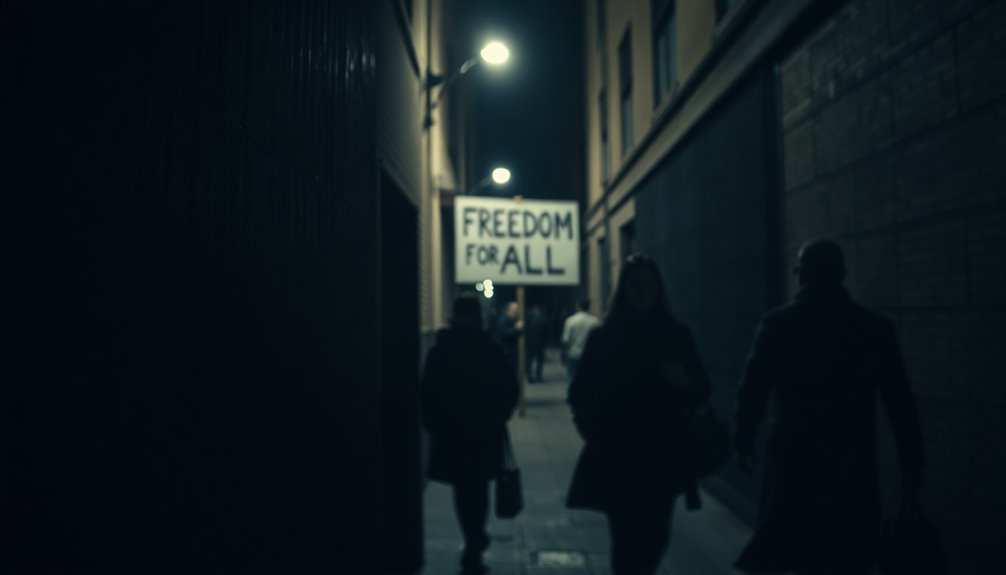
While “Sound of Freedom” captures attention with its dramatic storytelling, it overlooks critical systemic issues that contribute to trafficking. By focusing mainly on sensationalized rescue narratives, it misses the bigger picture.
Consider these overlooked factors:
- Most trafficking victims are adult women, yet the film largely highlights children, skewing public perception.
- Many victims know their traffickers, contradicting the film’s portrayal of random abductions.
- Systemic roots like poverty, lack of education, and inequality remain largely unexamined, limiting understanding of the issue.
These omissions not only misinform viewers but also divert attention from essential conversations about prevention and systemic change.
Addressing these issues is crucial for a holistic approach to combating human trafficking.
Misleading Statistics on Victim Demographics
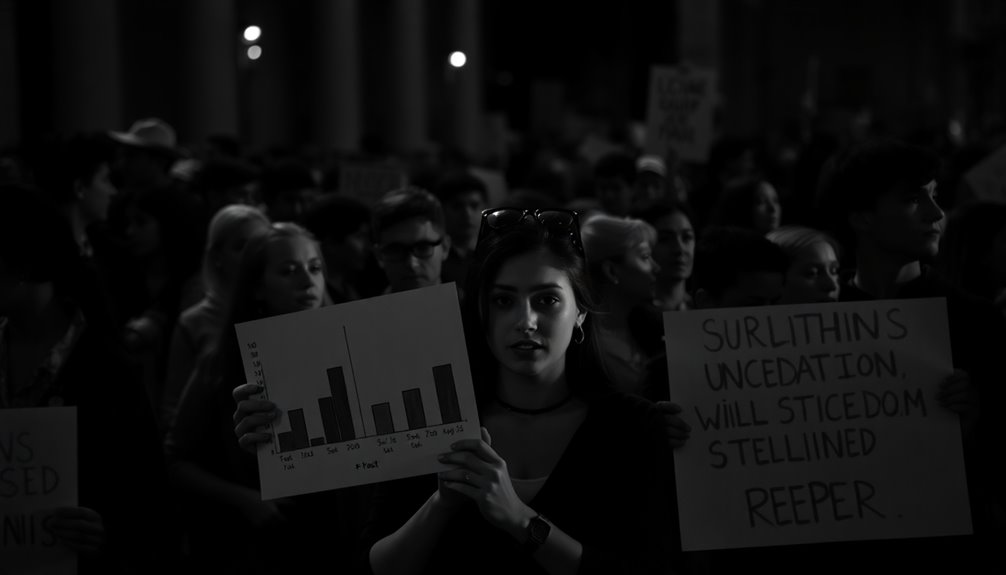
Many viewers of “Sound of Freedom” might be surprised to learn that the film misrepresents victim demographics, primarily portraying young children as the main targets of trafficking.
In reality, most trafficking victims are adult women, with children making up a smaller percentage. The film’s focus on child victims obscures the fact that about 70% of trafficking cases involve labor exploitation rather than sexual exploitation.
Additionally, the average age of child trafficking victims is often in their teenage years, contradicting the film’s depiction of young children. Research shows that many victims actually know their traffickers, challenging the film’s portrayal of random abductions.
Ethical Concerns in Rescue Methods
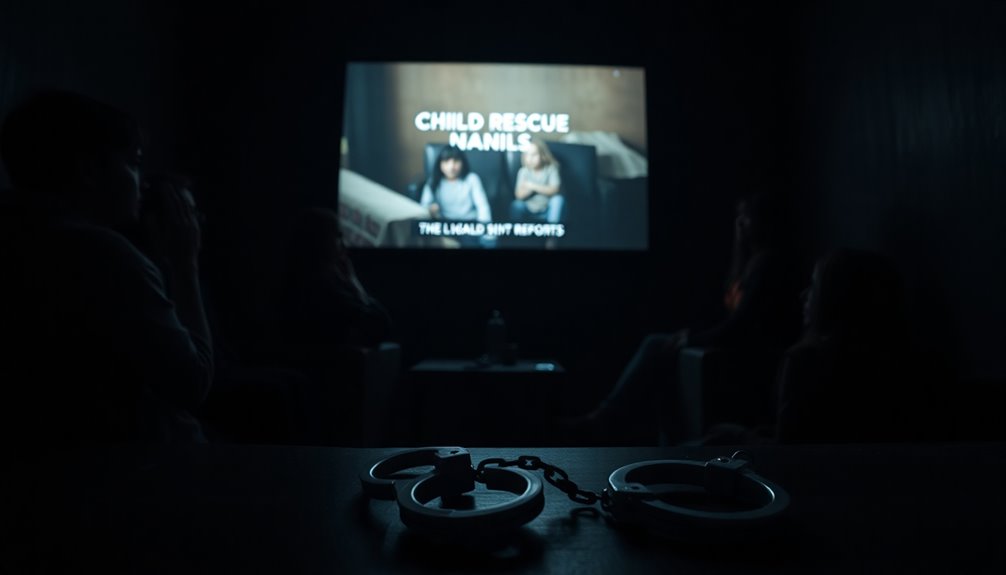
The portrayal of victim demographics in “Sound of Freedom” raises important questions about the methods used to rescue trafficking victims. Critics argue that Operation Underground Railroad’s tactics can be more harmful than helpful.
You should consider these ethical concerns:
- Safety Risks: Some rescue methods may jeopardize the well-being of victims, exposing them to further trauma.
- Exaggerated Success: The organization has been accused of inflating its achievements, creating a misleading narrative that oversimplifies complex trafficking realities.
- Focus on Dramatic Rescues: Rather than addressing systemic issues, the emphasis on high-stakes rescues distracts from developing sustainable solutions to combat trafficking.
These points highlight the need for a more responsible approach to victim rescue and support.
The Impact of Religious Beliefs on the Narrative

Religious beliefs shape the narrative of “Sound of Freedom,” influencing both its creation and the message it imparts. Tim Ballard’s faith deeply motivated his mission to rescue trafficking victims and establish Operation Underground Railroad. His wife, Catherine, backed his efforts, emphasizing shared convictions and family values that fueled their fight against child exploitation.
The film highlights a good versus evil theme, framing the battle against human trafficking as a moral crusade rooted in a religious worldview. Support from various religious groups further underscores this perspective, seeing the film as a rallying cry against societal moral decay.
Frequently Asked Questions
What Inspired the Creation of “Sound of Freedom”?
“Sound of Freedom” was inspired by the real-life efforts of Tim Ballard, who dedicated his life to fighting child trafficking.
You’ll find that his experiences in rescuing children from dangerous situations fueled the film’s narrative.
The creators aimed to shed light on this critical issue, sparking awareness and encouraging action.
Who Are the Key Figures Behind the Film’s Production?
Picture a small room buzzing with creativity and purpose—this is where the key figures behind the film “Sound of Freedom” come to life.
You’ve got Jim Caviezel, who stars as Tim Ballard, and Alejandro Monteverde, the visionary director.
They’re joined by producer Paul Hutchinson, whose passion fuels the project.
Together, they weave a story that sheds light on a significant issue, making their collaboration both compelling and essential in today’s world.
How Has the Film Affected Public Perceptions of Human Trafficking?
The film’s portrayal of human trafficking has considerably impacted public perception.
You might’ve noticed an increase in awareness and conversations surrounding this issue. Many viewers feel compelled to educate themselves and advocate for change, believing they can make a difference.
Despite varying opinions on its accuracy, the film’s emotional storytelling resonates, prompting a sense of urgency to address the stark realities of trafficking.
Ultimately, this motivates individuals to support related causes and organizations.
Are There Any Survivor Accounts Featured in the Film?
Yes, there are survivor accounts featured in the film.
You’ll hear firsthand stories that highlight the harrowing experiences of those who’ve endured human trafficking.
These accounts aim to shed light on the realities faced by survivors, making the issue more relatable and urgent for audiences.
What Actions Can Viewers Take to Support Trafficking Victims?
Did you know that an estimated 40 million people are trapped in modern slavery worldwide?
You can take action to support trafficking victims by donating to reputable organizations focused on prevention and recovery.
Volunteer your time to local shelters or advocacy groups, and raise awareness in your community about this urgent issue.
You can also educate yourself and others about the signs of trafficking, helping to create a more informed society.
Conclusion
In the end, the controversy surrounding “Sound of Freedom” highlights the need for a nuanced understanding of human trafficking. Take, for example, the case of a young girl rescued from a trafficking situation who later struggled to reintegrate into her community due to sensationalized media portrayals. This shows that while raising awareness is essential, we must also approach these stories with accuracy and empathy to truly support victims and address the systemic issues at play.
